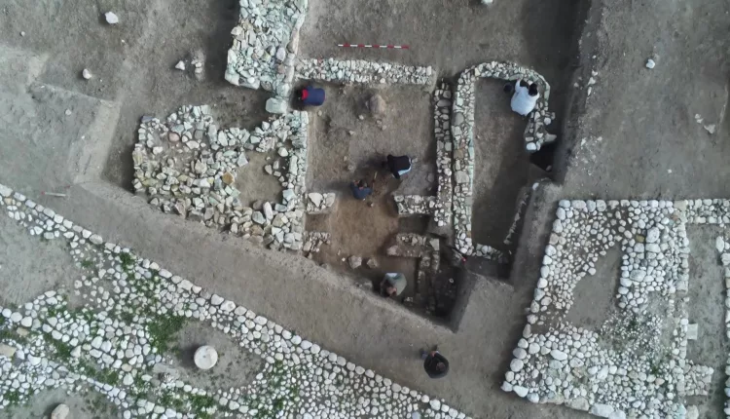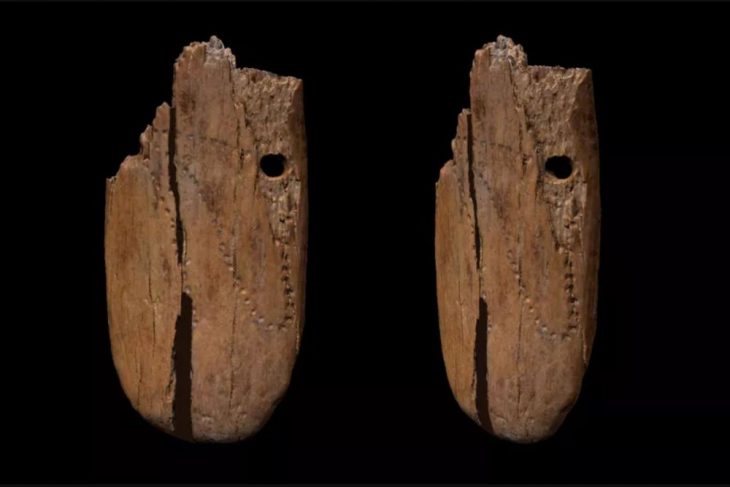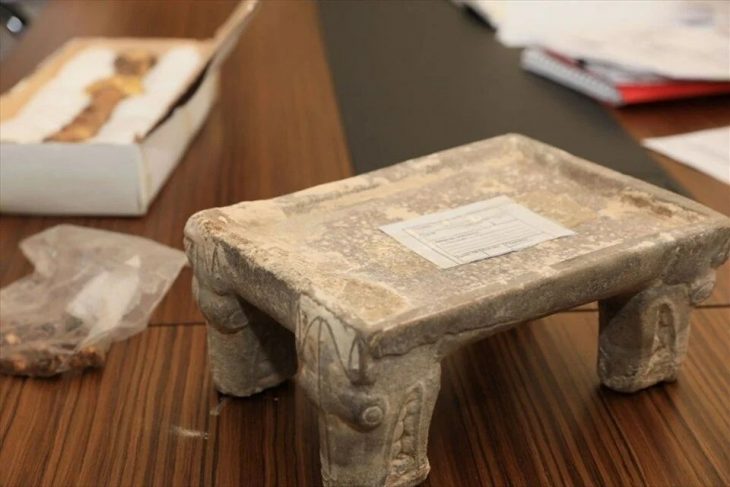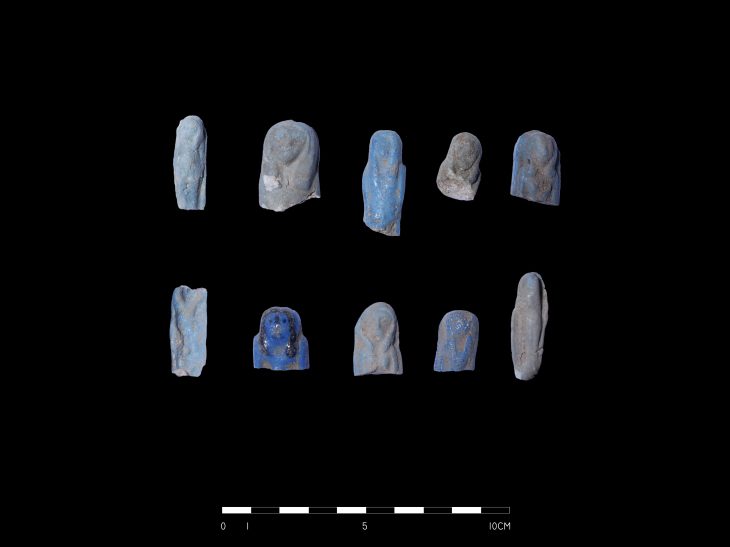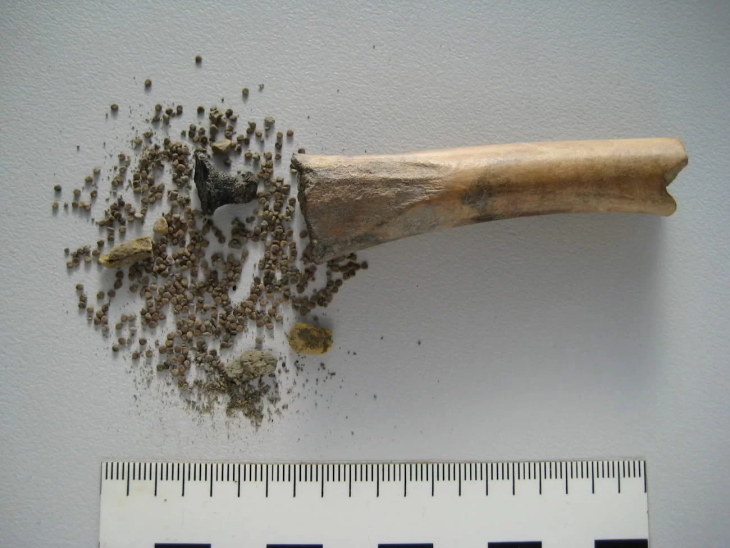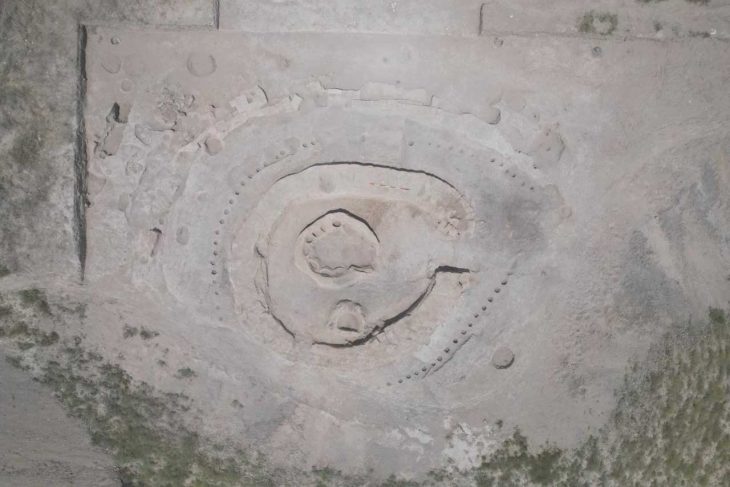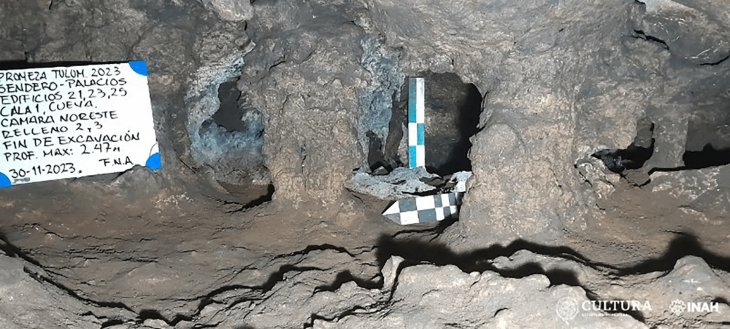The South Asasif Conservation Project, an Egyptian-American mission working under the auspices of the Ministry of Tourism and Antiquities, has discovered a 4,000-year-old tomb from the Middle Kingdom period (1938 BC – 1630 BC) in the South Asasif necropolis in Luxor, Egypt. This is the first Middle Kingdom tomb found in the area.
They also found an impressive collection of grave goods in the tomb, highlighting the wealth of the individuals buried there. The tomb consists of 11 burials, several still sealed, of men, women, and children. The female burials contain fine jewelry in excellent condition, including amulets, scarab rings, and girdles made of carnelian necklaces, two copper mirrors with ivory handles, and bracelets made from beads of semi-precious stones.
“One of the mirrors was found with a lotiform handle, while the second displays the rather rare design of a four-faced Hathor presenting her as a woman with austere features,” Dr. Elena Pischikova, director of the South Asasif Conservation Project, which led the dig, said in a release.
The amulets incorporated into the jewelry include hippo heads, hawks, ba amulets, wedjat eyes, Taweret amulets, and a snake head, among others.
A necklace of 30 amethyst barrel beads with an amazonite ba amulet in the center, and a girdle of carnelian ball beads connected by double strings of blue faience ring beads are some of the most exquisite pieces among the found jewelry.
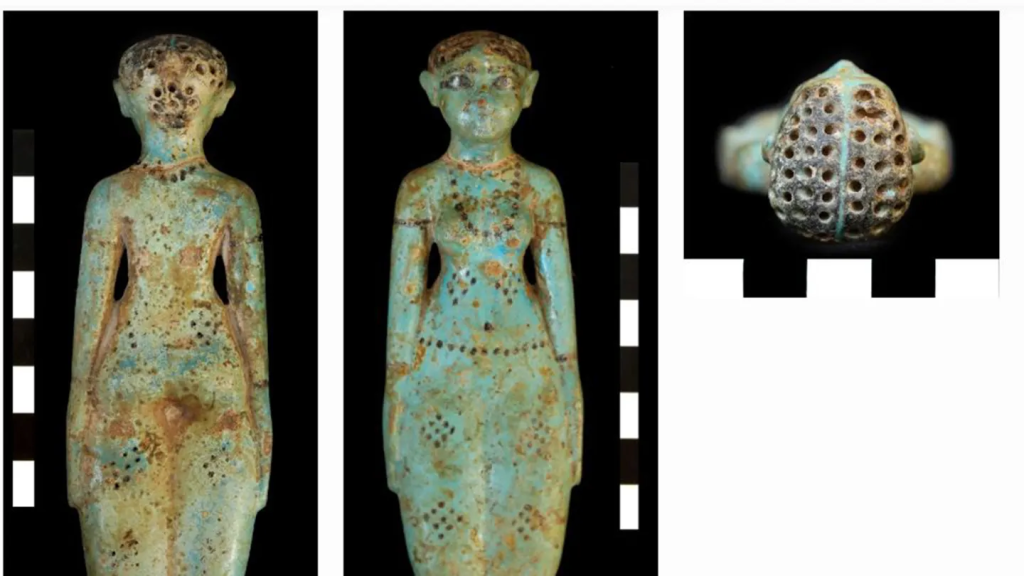
Archaeologists also called a green-blue glazed faience fertility figurine an “important find.”
“It is well-modeled and decorated with a variety of jewelry and lozenge markings on the legs and torso,” Pischikova said. “Her cropped hair is painted black. The head is pierced with holes arranged in three sections. The holes were intended for the attachment of ‘hair.’ Almost 4,000 mud beads found next to the figurine constituted her original hair.”
Many of the tomb’s original wooden coffins and linen wrappings were destroyed by ancient floods, but some items remained intact, including jewelry from women’s burials. The tomb, found in the South Asasif necropolis, next to the Temple of Hatshepsut on the Nile’s West Bank in Luxor, likely belonged to a family, archaeologists said.

The majority of the jewelry was connected to female burials, but one man and the children were discovered without any burial goods. Another remarkable necklace was found on one of the men who were buried; it had 40 faience ball beads, separated by one faience cylinder bead, and two carnelian cylinder beads that framed a hippo-head amulet at the back.
The original burials can be dated to the early 12th Dynasty based on the typology of some of the items discovered. Throughout the 12th and early 13th Dynasties, this family tomb must have been in use for a number of generations.

The unearthing of the first Middle Kingdom tomb in the South Asasif necropolis alters its history, placing South Asasif within the sprawling Theban Middle Kingdom necropolis.
This significant discovery contributes to our understanding of the burial practices and rituals of the Theban necropolis in the Middle Kingdom as well as presenting a beautiful collection of exquisitely crafted jewelry well preserved in situ.
The South Asasif Conservation Project
Cover Image Credit: The South Asasif Conservation Project


